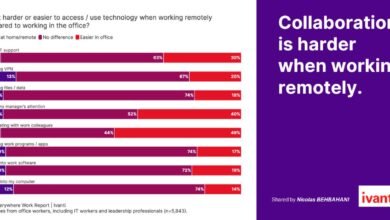
By | Andre Oentoro | Founder of Breadnbeyond
Time tracking is highly beneficial when implemented correctly. With time tracking, you can manage time better and delegate tasks to team members effectively. Tracking time is also great for increasing productivity at work as you can get the most urgent and important task done at a designated time.
However, implementing time tracking tools for the whole company is not easy. Your employees may interpret this differently with you having no trust in their work.
After all, employees who aren’t used to monitoring software can feel like their freedom is taken. They may consider sending a resignation letter if this monitoring goes further like invading their privacy.
Still, having a time tracking app is great for both ends: employers and employees. Employers can see which time-consuming project is effective in bringing revenue, while employees can benefit from a more efficient work schedule and better task management.
When applying a time tracking tool in your company, you should pay attention to how you introduce this software to your team. Here are the eight ways to implement time tracking in your company without causing misunderstanding with team members:
1. Get everyone on board
The first step to successfully implementing time tracking in your company is getting everyone on board. This means that you must explain the benefits of time tracking to your employees and how it can help them be more productive.
You should also address any concerns they may have about privacy or feeling monitored. Once everyone is on board, you can start looking for the right time tracking tool for your company.
2. Find the right software
There are many different time tracking tools available, so it’s important to find one that’s right for your company. You’ll want to consider the features you need, the price, and how easy it is to use. You should also ensure that the time tracking software you choose integrates well with any other software you use in your business.
3. Train your employees
Once you’ve chosen a time tracking tool, it’s important to train your employees on how to use it. This will ensure that they can get the most out of the software and understand how to use it properly.
Make sure to review all of the software’s features and how they can help them be more productive. It’s also a good idea to provide training videos on how to use the software so they can see how it would work in a real-world scenario.
4. Create a pilot program
Before you roll out the time tracking software to your entire company, it’s a good idea to set up a pilot program. This will allow you to test the software and ensure it works well for your business.
It also allows you to see how your employees react to the software and make any necessary adjustments before implementing it company-wide.
5. Define the rules
Once you’ve chosen a time tracking tool and trained your employees on how to use it, it’s important to define its rules. This will ensure that everyone is on the same page and knows how the software should be used.
You may want to include in your rules what information needs to be tracked, how often it needs to be tracked, and who has access to the data.
6. Monitor the progress
Once you’ve implemented time tracking in your company, it’s important to monitor progress and see how it’s impacting your business. This will help you determine if the software is working well or if there are any areas that need improvement.
It’s also a good idea to check in with your employees from time to time to see how they’re finding the software and if they have any suggestions on how it could be improved.
7. Make adjustments
As you’re monitoring the progress of time tracking in your company, it’s important to make adjustments as needed. Bad habits that can interfere with your work such as playing games, watching movies, or so on. Manage your time wisely and eliminate your bad habits that can distract you from your work. This may include changing the software you’re using, adjusting the rules you’ve set, or providing more training for your employees.
By making adjustments, you can ensure that time tracking positively impacts your business and that your employees are getting the most out of it.
8. Encourage feedback
Throughout the process of implementing and using time tracking in your company, it’s important to encourage feedback from your employees. This will help you identify areas that need improvement and ensure that your employees are happy with the software.
You can collect feedback through regular check-ins, surveys, or simply by asking for input when making changes to the time tracking system.
Wrapping Up
Even after successfully implementing time tracking in your company, it’s important to keep looking for ways to improve your task and see if this tool is effective for the business.
So, make sure to implement time tracking in a way that makes sense for your business and always is open to feedback from your employees. If the outcome is great and the software has brought a positive impact, you can continue using this time tracking tool to improve your business. Also, keep communicating with your team members and ensure them that time tracking is a valuable tool for both company and their productivity.
Author Bio:

Andre Oentoro is the founder of Breadnbeyond, an award-winning explainer video production company. He helps businesses increase conversion rates, close more sales, and get positive ROI from explainer videos (in that order).
Twitter: @breadnbeyond
Email/Gravatar: andre@breadnbeyond.com
LinkedIn: Andre Oentoro






